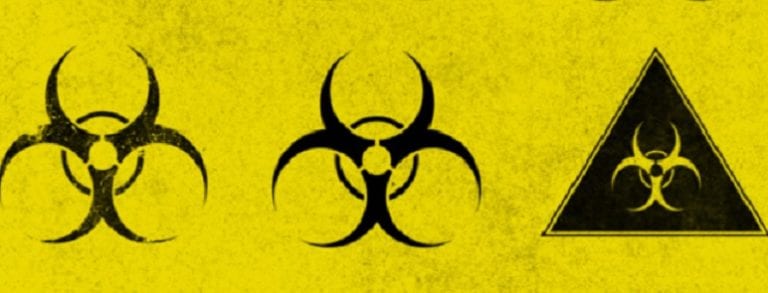

DOD Fails to Implement Biosecurity Years after Army Lab Mistakenly Sent 575 Anthrax Samples


Years after a U.S. Army laboratory accidentally sent hundreds of live anthrax bacteria samples to 194 facilities around the globe, the Department of Defense (DOD) has not implemented biosafety and biosecurity programs to prevent a repeat of the potentially deadly mistake. The failure has left government labs and the public at risk, according to a federal audit conducted by the Government Accountability Office, the investigative arm of Congress. The probe was conducted after an Army lab at the Dugway Proving Ground in Utah inadvertently made 575 shipments of live Bacillus anthracis, the bacterium that causes anthrax, to contractors worldwide.
A military investigation could not pinpoint the exact cause of the failure, which is hard to believe, but the probe led to the recommendation of specific actions to improve security at facilities that handle dangerous agents and toxins. That was more than three years ago. The DOD even created a special office, known as Biological Select Agents and Toxins (BSAT) Biorisk Program, to oversee the new security measures. Years later, it has yet to carry out the safety measures. The DOD has devised a BSAT Biosafety and Biosecurity Program, congressional investigators found, but hasn’t bothered to put it in place. “DOD has not developed a strategy and implementation plan for managing the program,” the report states. “Without a strategy and implementation plan, Dugway Proving Ground, Utah, and DOD’s laboratory facilities that currently produce and handle BSAT may be unclear about DOD’s strategy to harmonize BSAT operations to ensure safety, security, and standardization of procedures throughout DOD’s BSAT enterprise.”
The probe further discovered that the DOD has no estimated time frames for when it will adequately secure dangerous biological matter, even though a deadline was set for early last year by federal legislators. Congressional investigators visited six military laboratories in the course of their probe and interviewed staff. Apparently, the Army created a list with dozens of measures to boost security at labs and, though some have been implemented, there is no way to assess their effectiveness. “What’s at stake here is that these labs deal with very dangerous biological materials, in this case, Bacillus anthracis, that could potentially cause anthrax,” said Joseph Kirschbaum, the lead GAO investigator in this case, in an agency broadcast. Kirschbaum, a defense capabilities expert, added that “the assessment of these high-risk bioagents is vital for our own safety and the ability to conduct military options in the future, so it was really important that the Department of Defense continue to take this seriously.” Does the DOD really need a federal audit to remind it of this?
Military labs aren’t the only ones endangering the world with the careless handling of hazardous pathogens. Hundreds of government, private and academic laboratories around the country that conduct research on BSATs are also guilty of serious safety lapses. The GAO identified an alarming 276 instances, warning that the mishandled agents may cause serious or lethal infection in humans, animals or plants. “BSAT materials, such as the Ebola virus and Bacillus anthracis—the bacterium that causes anthrax—have been determined to have the potential to pose a severe threat to public health and safety,” the report states. “Laboratories conduct research on BSAT for a variety of reasons, including identifying their characteristics and developing vaccines and other measures to help diagnose, prevent, or treat exposure to or infection by these agents.” The safety lapses “raise concerns about whether oversight of biosafety and biosecurity in these laboratories is effective,” the GAO writes. That is certainly an understatement.
Judicial Watch has reported extensively on similar beaches at government-owned nuclear laboratories with notoriously faulty management, weak security and lousy oversight. Among the biggest offenders is the Los Alamos National Laboratory in New Mexico, among the world’s largest science institutions and the nation’s key nuclear weapons research facility. The massive lab is charged with developing technology to reduce global threats and ensure the safety, security and reliability of the U.S. nuclear deterrent. Last year Los Alamos mistakenly shipped radioactive material on a commercial cargo plane. Before that lab officials sent top secret data relating to nuclear weapons via an open electronic mail network and police accidentally stumbled upon it in a drug dealer’s mobile home during a drug bust. Other recent Los Alamos breaches include foreign scientists that stole “classified restricted data” involving nuclear weapons and passed it along to a foreign government that’s hostile to the U.S. Back in the 1990s a Chinese communist scientist stole nuclear secrets from Los Alamos and Judicial Watch represented the whistleblower, Notra Trulock, responsible for launching an investigation into the Chinese scientist’s actions.















